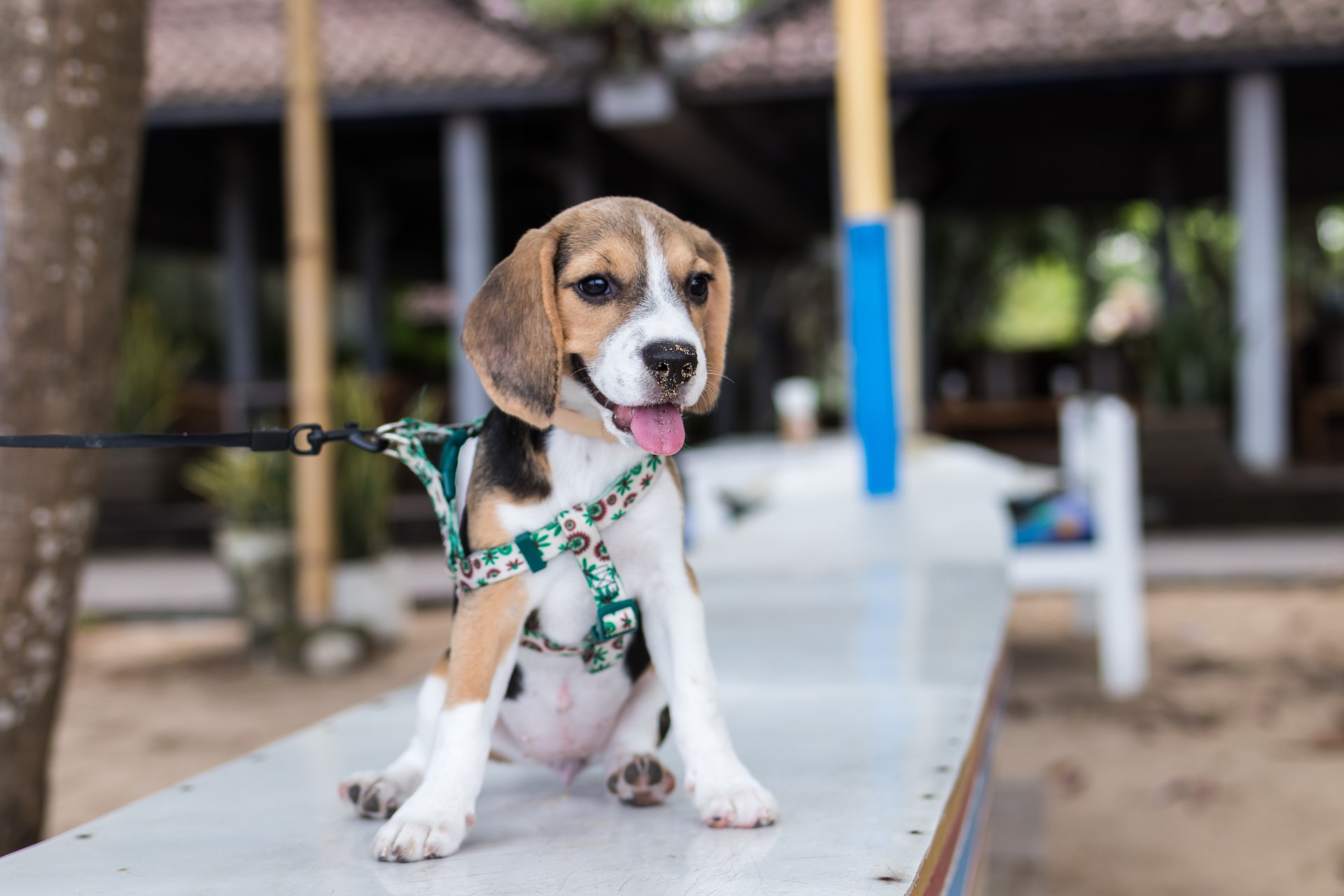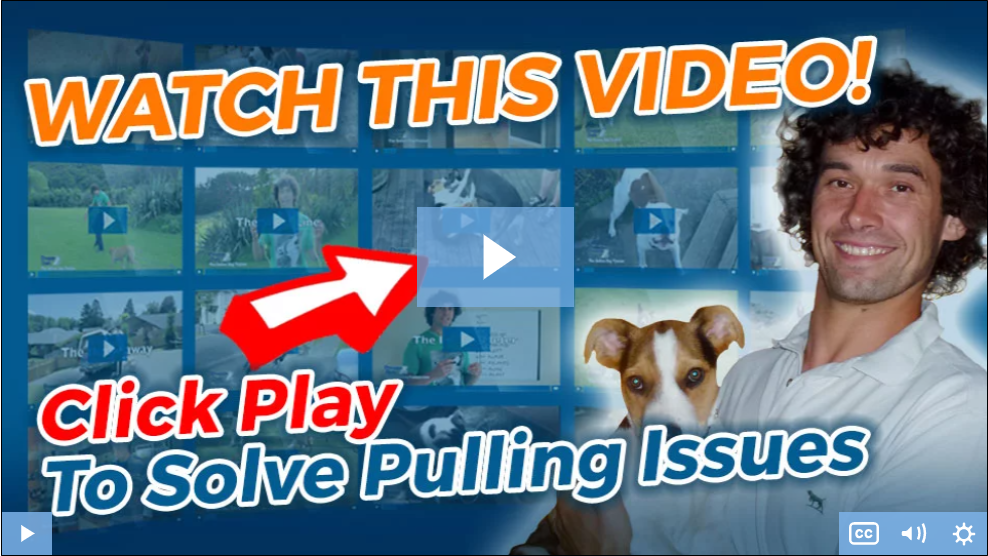If you want to learn how to stop your puppy pulling on the leash, then this is the most important page you’re ever going to read.
I still remember the first time I tried to leash train my 6-month-old Lab.
Every day was a constant struggle as I attempted to maintain control of my firey little pup as he ran circles around me with the leash.
And let me tell you, dealing with a puppy that obsessively pulls on the leash isn’t something you want to have to deal with on a day to day basis.
Now, luckily, I managed to nip this problem in the bud relatively quickly by implementing the training techniques I learned from Dan Abdelnoor over at The Online Dog Trainer.
But in the weeks that led up to me finding this lifesaving information, I was constantly fighting as my puppy attempted to pull me in every direction imaginable.
See, despite what you might think, walking nicely on a leash isn’t an instinctive behavior for puppies. Heck, even grown up dogs are likely to pull you in random directions without proper leash training.
I mean, sure it’s cute to watch your puppy explore and discover new things. But there comes a time when you need to nip the problem in the bud…
…Especially as they start to reach adolescence.
So today, I want to quickly take you through some of the things that will help you eliminate your puppy’s leash pulling problems, in the hope that you can quickly solve the issue before it gets out of control.
WATCH VIDEO: Discover How To Quickly & Permanently Stop ANY Puppy Pulling On The Leash Using 5-Step-By-Step Calming Exercises That Has Your Puppy Choosing To Obey You…
(video will open in a new window)
Why Is My Puppy Pulling On The Leash?
Understanding why your puppy pulls is the first step to understanding how to stop the behavior. Obviously, your dog simply wants to be in front or ‘ahead of the pack,’ and being leashed restricts this privilege.
Knowing the driving force behind the pulling is essential. So here are a few possible reasons that your puppy might pull…
Excess Energy
It isn’t easy to control a puppy with pent-up energy. The extra power can often make your puppy lack self-control, even with prior leash training.
The best solution here is to simply work out all this excess energy by engaging them with physical activity and/or exercise.
The simple trick will make you give you a distinct advantage when it comes to your daily walk.
Attractive Environment
Puppies tend to pull when they are focused on something within their surroundings. This is often intensified when your puppy sees another dog or something that looks like prey.
Dealing with such behavior caused by environmental triggers is difficult. So the best thing to do here is simply to teach your puppy self-control around these triggers.
Fear and Anxiety
A terrified puppy will always pull the leash continuously. This could be through fear, or worse still, a desire to simply run away.
As well as this, pressure from a particular harness or collar can be another anxiety trigger. So keep in mind if your puppy is exhibiting pulling behavior with a new collar or leash.
Type of the Leash
It’s easy to think that if you pull the leash harder, it will make them stop.
But the truth is that pulling can sometimes lead to more pulling from your puppy. And this is particularly true with the retractable leashes.
The reason behind this is that whenever you pull the leash, it activates your puppy’s “opposition reflex.” This is a physical reflex that all dogs and puppies possess, so it’s not something that can be stopped.
In fact, all it really does is make your puppy believe that they have to pull harder to get where they want. So, in reality, the pressure just encourages your puppy to pull because they think it’s correct.
Related: 5 step-by-step calming exercises to instantly stop your puppy pulling the leash…
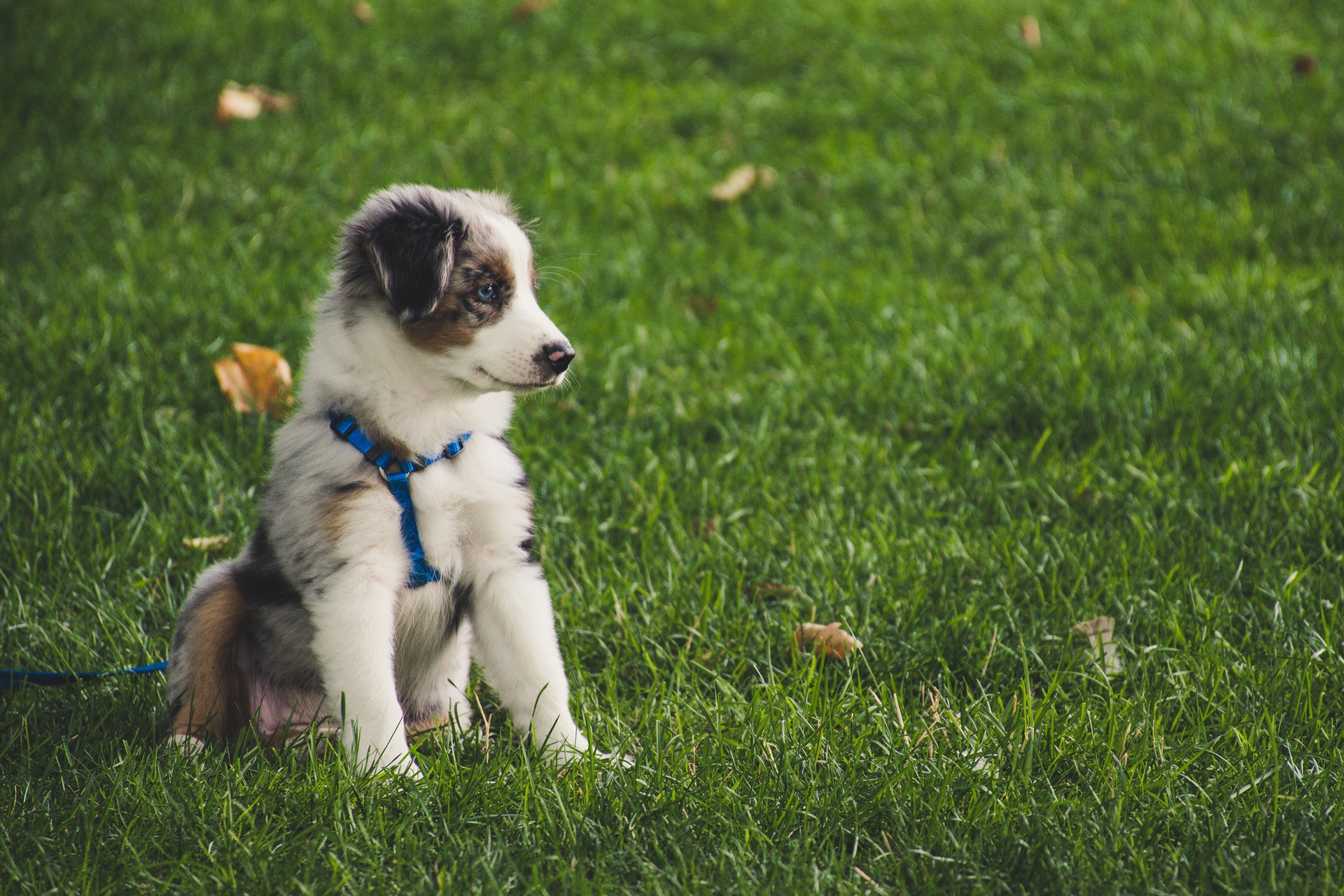
How To Stop My Puppy from Pulling On The Leash
Leash pulling is always going to be challenging to correct. But usually, it’s easier to train it out of a puppy due to their tender age.
So here are a few tips on how to stop your puppy pulling the leash when out and about.
Get the Right Equipment
It sounds simple, but choosing the right leash or harness can be the difference between success and failure. It’s not a quick fix, but any harness that helps control your pup (like a chest led harness) is always going to be ideal in this situation.
However, I’d always recommend staying away from products that cause discomfort or pain. As this type of equipment will encourage your puppy to react by pulling.
Exercise Your Puppy
Puppies are playful creatures. Keeping them indoors will sometimes result in excess energy. This pent-up energy can often develop into a lack of self-control if not addressed quickly.
So giving your puppy plenty of exercise will them get rid of any extra energy. Often eliminating this desire to pull on the leash.
Using Rewards
Puppies tend to get motivated by different things at different times. So giving your puppy a small reward or treat every now and then can sometimes reinforce the good behavior.
Call A Professional
Puppies are more comfortable to leash train than adult dogs. Getting a professional leash trainer will relieve you from the stress associated with your puppy pulling on the leash when walking.
This process takes time, but it is worth the price.
Exercise Ultimate Patience
Again, training your puppy on how to walk on a leash without pulling takes time. The process can be frustrating even with a careful and systematic plan.
Try new things to keep your puppy motivated and keep your mind open. You need to understand that self-control in puppies takes time.
So stick with it, and you’ll be able to enjoy the benefits in the long run.
Talk To Your Puppy
Dogs tend to listen to their owners. So talking to your puppy or even ending the walk when they’re pulling will eventually give them a clear indication that something is wrong.
Also, stopping and changing the direction has been proven to work numerous times when puppies pull. This is basically because they have to release the tension on the leash to follow you.
Create An Unconducive Environment For Pulling
Creating an environment that does not encourage pulling is always best. It will not cause any chronic or sudden injuries to your canine friend.
Again, changing direction or stopping will your puppy a subtle hint that they shouldn’t pull. And when they stop, simply reward them. But only after the leash goes slack and there is no tension.
Related: 5 step-by-step calming exercises to instantly stop your puppy pulling the leash…
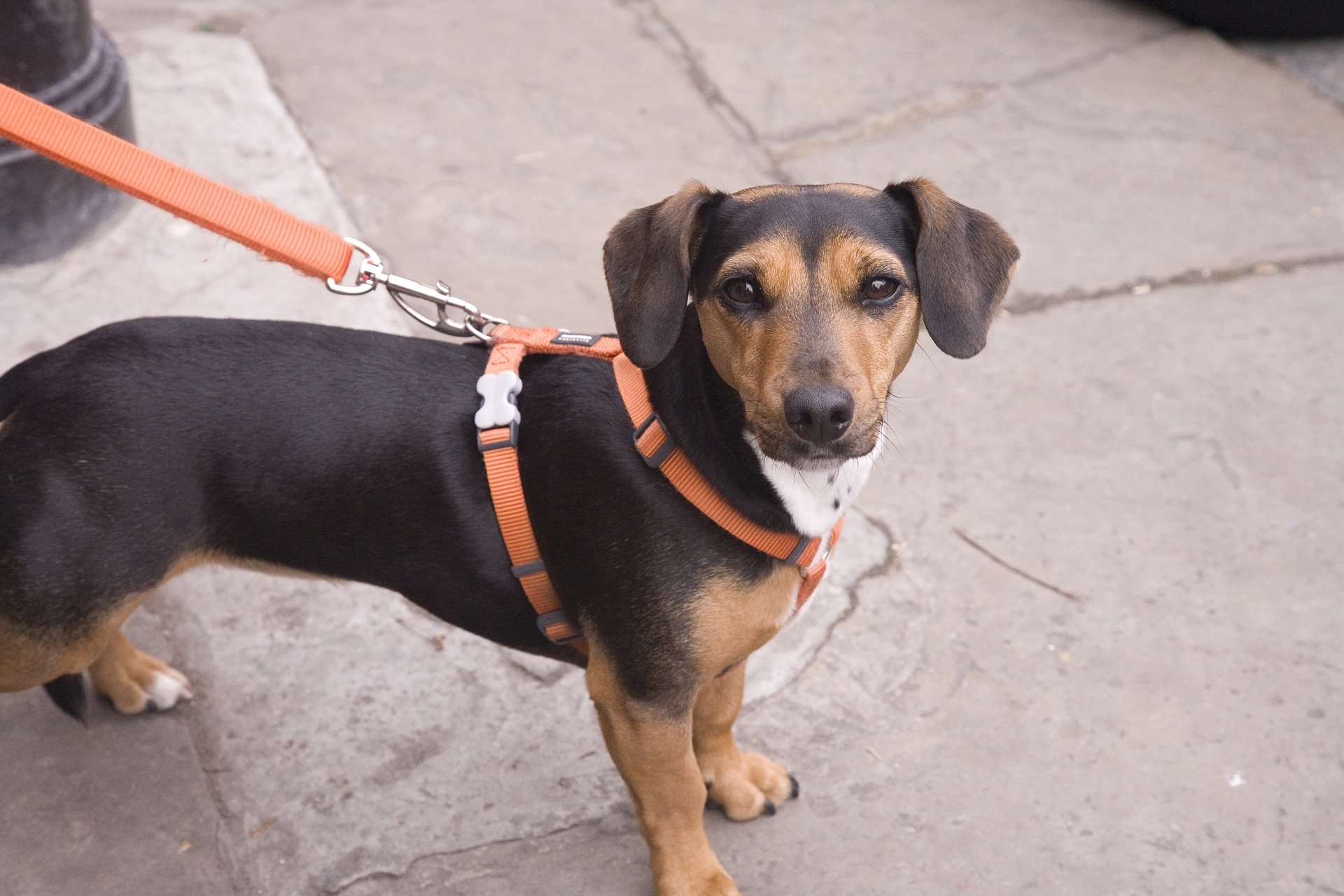
How To Train Your Puppy To Walk Correctly On The Leash
When done correctly, teaching your puppy to walk on the leash is relatively straightforward.
So here are few ways to get your pup to walk calmly on the leash…
Introducing the Collar and Leash
Start by training your puppy to get used to their collar and leash.
Why?
Because wearing it simply helps them get used to it. And rewarding your puppy while they wear it can help them develop a positive association with the leash.
Burn Off Extra Energy
Puppies tend to have a lot of energy that needs to be relieved frequently. So having a long exercise session to burn off extra energy should always be a high priority.
Basically, the more tired your puppy is, the less interested in relentlessly yanking the leash.
Teach a Cue
Introduce a sound cue to grab your puppy’s attention is another great option.
Here’s how it works…
Make a sound (any sound) that you want your puppy to associate with no leash pulling activities.
Then, once your pup gets close, reward him with a treat or positive attention.
Then repeat the same sound cue several times and keep rewarding your puppy every time he comes over to you.
Eventually, he will get the message that this particular sound equals rewards and will stop whatever he’s doing to get it.
Practice Walking Indoors
Try walking inside the house with minimal distraction and make the sound cue.
If you’ve done things right, your pup will come over because he expects a treat.
You need to bear in mind that you might need to repeat this dozens, possibly hundreds of times, because it can often take a while to get the message due to their short attention spans.
Try Walking in the Yard
This is a great challenge to test the leashing skills of your pup. It helps if you practice a little bit of patience since an outdoor environment is full of distractions.
So when you’re out in the yard. Simply walk with your puppy and try to spot any signs of pulling or lunging.
When this happens, make the sound cue and move a few steps away whenever he pulls.
Eventually, this cue will grab his attention, and he’ll come over for a treat.
Again, practice positive reinforcement by praising your puppy, so he gets used to it.
Keep Up the Pace
Puppies are playful, and this will give you trouble to outpace them. Pulling will occur since the pup is moving faster.
We recommend increasing the pace and keeping the walk brisk. The trick will make your puppy more interested in staying with you.
Related: 5 step-by-step calming exercises to instantly stop your puppy pulling the leash…
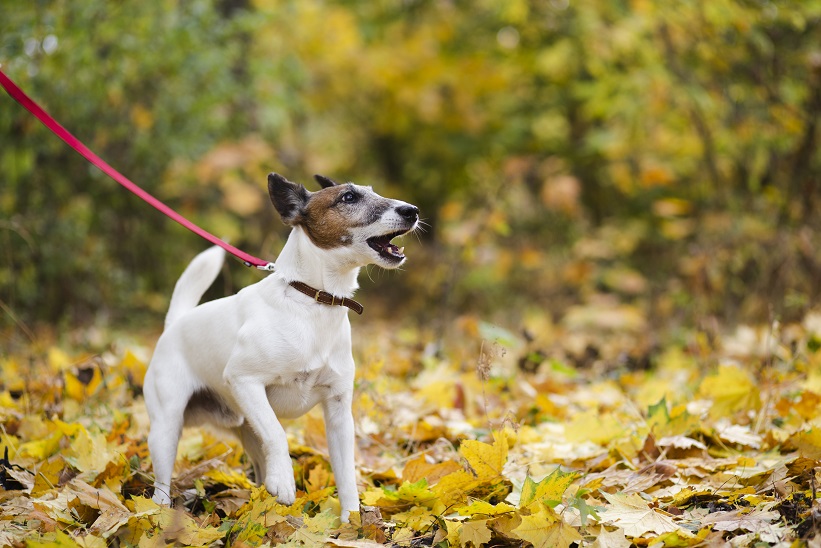
Can Pulling On The Leash Hurt Your Puppy?
Absolutely. You need to remember that your puppy is constantly growing. And they may not have developed the lean muscle to combat this.
Constant pulling tends to restrict blood flow to the puppy’s eyes and ears.
In worst-case scenarios, it can also lead to sudden or chronic injuries. So I’d recommend getting a properly fitted harness to keep your little friend safe and comfortable.
What Age Should You Start Leash Training A Puppy?
Leash training should start at around six weeks old. Pups at this age tend to embrace the habit and learn proper leashing skills much faster.
However, your success will ultimately depend on how well you’re able to leash train your puppy. So if you’re unsure, hiring a professional trainer can help.
Is It Ok To Leave A Collar On A Puppy?
Not really. The collar will interfere with the pup’s sleep, cause neck injuries and thyroid problems. Besides that, some collars can trigger an allergic reaction.
However, wearing the collar frequently helps your puppy to get used to it. Which tends to make leash training a lot more straightforward.
Is A Collar Or Harness Better For A Puppy?
To be honest, I’ve always found a harness is the best option because it helps prevent the puppy from getting tangled in the leash.
Also, a harness tends to distribute pressure equally, which prevents any discomfort.
In Conclusion
All in all, leash pulling is frustrating. But it’s also a behavior that can be easily corrected given the proper tools and training.
Keep in mind that training your puppy to walk on a leash simply takes time.
But if you follow one or more of the times highlighted above. I’m confident you’ll be well on your way to having a properly trained puppy who doesn’t pull the leash sooner rather than later.
WATCH VIDEO: Discover How To Quickly & Permanently Stop ANY Puppy Pulling On The Leash Using 5-Step-By-Step Calming Exercises That Has Your Puppy Choosing To Obey You…
(video will open in a new window)
